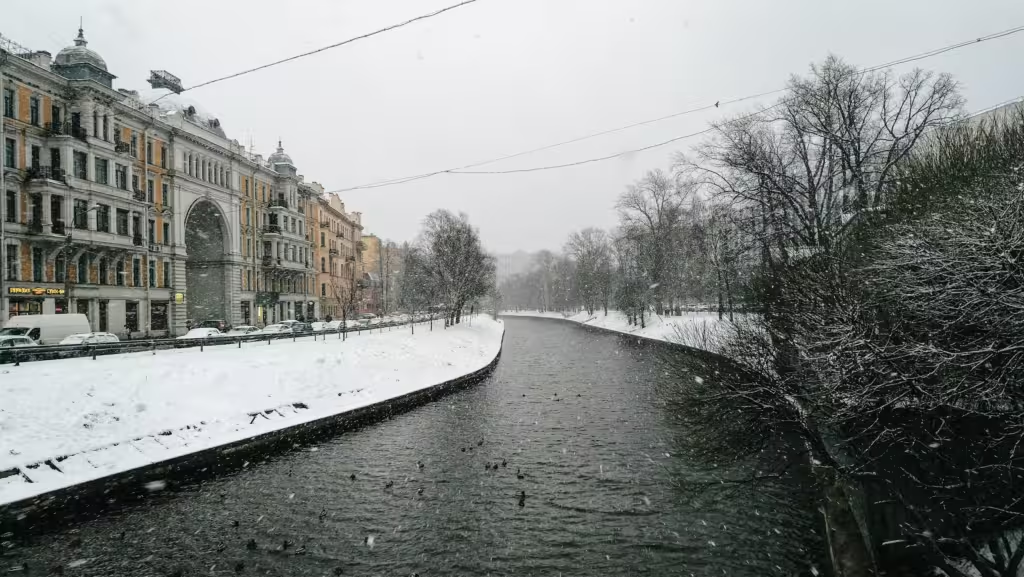It was dramatic. One might even say unprecedented. Temperatures changed far more rapidly than the ecosystem could adapt to, in mere decades. It can only mean one thing. But not what you might think since the subject here is the Younger Dryas some 12,000 years ago, during which Don J. Easterbrook explains that the temperature apparently rose by around 10°C in 40 to 50 years. Which you can try to tell the next alarmist who says 1.5°C in 150 years can’t be natural.
The Younger Dryas is also odd because… well, OK, because of its weird name, for starters. Who is Dryas and who’s he or she younger than? So let’s clear that one up first. This strange episode which fell about 5,000 years after the end of the last glaciation, during which the temperature suddenly fell by around 5°C, is named for an arctic flower, Dryas octopella, because the pollen studies that revealed its existence saw this plant flourishing as it got colder.
Yes, not everything hates cold; nature is very diverse. And it is prosaically younger than the “Older Dryas“ that Wikipedia calls “a variable cold, dry Blytt–Sernander period” (well, you did ask) that seems to have hit and then ended equally suddenly about 14,000 years ago and lasted only a few centuries.
Wikipedia also claims the Older Dryas was regional, a characteristic reflex nowadays with any natural climate event. But Easterbrook makes short work of any such claim with respect to its kid sibling. “Radiocarbon and cosmogenic dating of glacial moraines in regions all over the world and abrupt changes in oxygen isotope ratios in ice cores indicate that the Younger Dryas cooling was globally synchronous.” And there’s evidence of glacial advances from Europe and North America to Asia, New Zealand and South America.
There’s more. The extremely sudden start and end of the Younger Dryas, he observes, rules out the customary orbital explanation for glaciation cycles, the “slow, Croll-Milankovitch orbital forcing, which occurs over many tens of thousands of years.” One plausible argument has been that it was the accumulation of meltwater as the primordial Lake Agassiz burst through an ice barrier, whooshed down what would become the St. Lawrence into the North Atlantic, and shut down the deep-water currents supposedly also now threatened by a tiny temperature increase, bringing back glacial conditions. But alas:
“If indeed that was the case, then the Younger Dryas would have been initiated in the North Atlantic and propagated from there to the Southern Hemisphere and the rest of the world. Since that would take time, it means that the YD should be 400-1000 years younger in the Southern Hemisphere and Pacific areas than in the Northern Hemisphere. However, numerous radiocarbon and cosmogenic dates of the Younger Dryas all over the world indicate the cooling was globally synchronous.”
Dang.
Could it get worse? Yes, if you’re an alarmist. Easterbrook also observes that oxygen isotopes from various ice cores show “not only the Younger Dryas cooling, but several other shorter cooling/warming events, now known as Dansgaard-Oerscher events.” At the risk of seeming parochial, they might be easier to discuss if they were called Wong-Jones events. But we’ll take a chance on “Oerscher” (presumably OR-shur?) because again, you’ve got dramatic short-term temperature fluctuations that are absolutely, positively, natural and not caused by changes in CO2 of any sort. So the whole theory that CO2, or CO2 plus methane, nitrogen oxide and a few other gasses are the global thermostat is, well, hooey.
If you want him to reach into his hat and pull out the one true cause, well, sorry. No rabbit. “The climatic fluctuations before and after the Younger Dryas, as well as the fluctuations within it, and the duration of these changes are not consistent with a single event cause of the YD. Neither cosmic impact or volcanic eruptions could produce the abrupt, multiple climatic changes that occurred during the late Pleistocene.” The true situation seems to be that climate is so complicated it’s non-linear.
There are important causal factors, and orbital eccentricities might explain the larger patterns of glaciation and melting during the Pleistocene. But it is also manifestly the case that temperatures do fluctuate dramatically, often very quickly, because of things that aren’t just complex but often apparently trivial. And since they do it naturally, and do it often, any theory that starts by claiming the opposite, that current conditions are so unlikely as to be unnatural, is purely the province of science deniers.


